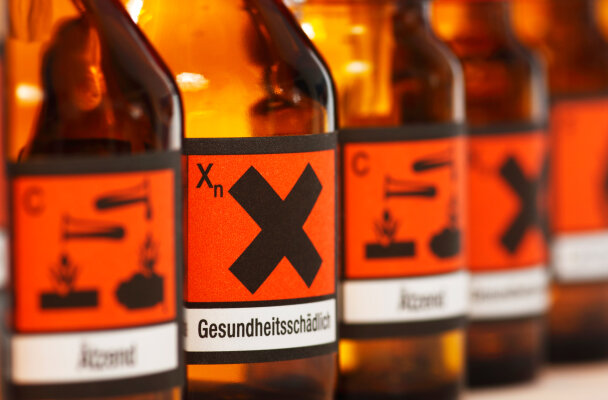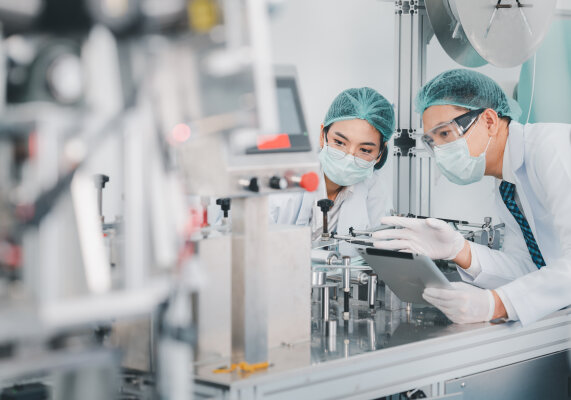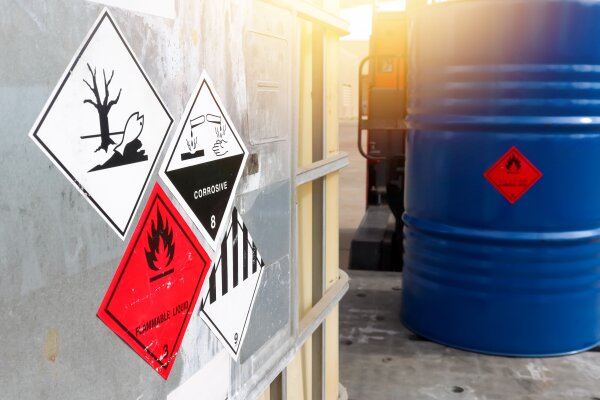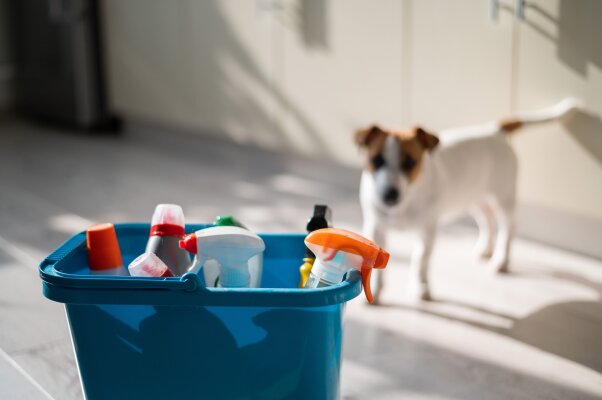Autoclave validation: sterilization preparation
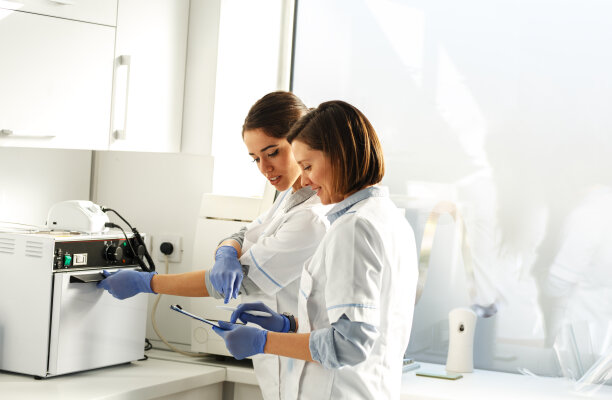
In order to be able to ensure a high qualitative standard for autoclaves,a legally prescribed validation proceduremust be carried out. Only then can it be shown that the results of the reprocessing are repeatable and appropriate – and remain so. We have summarized here the requirements for validation, the steps involved, and the legal regulations that apply.
Requirements for the validation of the autoclave
For validation to take place, the steam sterilizer must meettechnical, organizational and operationalrequirements. Only on this basis can the question “What is an autoclave?” be answered.
The requirements are part of thefixed repertoire of quality assuranceand can be found, for example, in the “Guideline of the DGKH for the validation and routine monitoring of sterilization processes with moist heat for medical devices“.
Technical requirements
In order to meet the technical requirements, the following minimum requirements in particular must be demonstrated during the validation of the autoclave:
- It is a fractionated vacuum process
- Suitable connection pieces for the test equipment are available
- An absolute pressure measurementof the chamber pressure can be performed
- A Bowie program, a Dick test program and a vacuum test program can be integrated
- The temperature measuring devices for the display and the control of the autoclave can be controlled separately
- A line recorder and/or a measured value printer is provided, which can record the chamber pressure and the chamber temperature over a selected period of time independently of the controller
- The performance criteria according to EN 285 are met
Organizational requirements
Minimum criteria are also prescribed for the organizational requirements when validating the autoclave. Of these, the most relevant are:
- Documentation of the conditions, measures and functions(such as a steam boiler certificate, the existence of instructions for use or the measures carried out to inspect and rectify defects)
- Presence ofcontrolled environmental conditions
- Compliance with guidelines for preparation, packaging and loading of the autoclave
- Carrying out feed water analyses
- Keeping of test reports, packing lists (including weight data) and control records
Operational requirements
Finally, there are operational requirements that serve to ensure quality. These primarily comprise work instructions with which all reprocessing steps are documented. In addition, there are routine inspection schedules, training schedules and a suitable maintenance as well as calibration schedule. With the help of release documentation, other aspects must also be recorded, which include these in particular:
- Dateand time
- Sterilization identifiers, batch numbers, operator name and code, and release
- Resultsof the tests performed, indicating the sterilization program selected.
- Recordingof the individual process data (such as temperature and pressure)
Autoclave qualification
While validation of the autoclave proves that the sterilization process is equally effective and reproducible, prior qualification must first prove that the equipment as presented is suitable for the intended task in the first place.
It also proves that the device is working properly and that the delivered results are in accordance with the requirements. Qualification is afour-step process consisting of DQ, IQ, OQ and PQ.
DQ – Design Qualification
DQ – design qualification – is understood as the first step, which deals with the basic characteristics. Here it is ensured that the implementation and design of the machine comply with the required parameters of the order. This is the only way to achieve the desired process accuracy and speed.
IQ – Installation Qualification
The next step is IQ (Installation Qualification), which starts after delivery of the device. It is checked whether the characteristics of the delivered machine correspond to the technical specificationsof the manufacturerand whether the assembly has been carried out professionally. In addition, the documentation is reviewed.
OQ – Operational Qualification
Finally, according to the characteristics, the function of the autoclave is also checked, which is performed in the OQ (functional qualification). This is based on the question of whether the manufacturer’s functional specifications correspond to those of the autoclave supplied and whether the previously defined specificationshave been met.
PQ – Performance Qualification
This is followed by Performance Qualification, which is abbreviated as “PQ”. This finally compares the requirements of the specifications with the services that are actually provided in reality. Therefore,a separate PQ test must be performed for each loading configuration. Only after this last step is the actual completion of the autoclave qualification by setting an interval for re-validation.
Autoclave validation
Not only the qualification, but also the validation of the autoclave is regulated with regard to the procedure and set in several steps. Validation is understood to be proof that the autoclave achieves a sterilization process with reproducible results under operating conditions at the respective site. Accordingly, it performs at all times the desired performance, which was both specified in advance and achieved during the subsequent qualification.
Picking
The validation of autoclaves begins with commissioning, which proves that the device at the installation site meets all the described requirements and that the specifications correspond to reality. Several stepsmust be performed for this, starting with the identification of the sterilizer. This is followed by the review of various aspects, which must include in particular the following parts and processes:
- Technical, organizational and operational preconditions
- Compliancewith the specifications under the existing environmental conditions
- Operational safety, supply of operating materials and routine control
- Calibrationof measuring instruments and sterile preparation
Performance Evaluation
The validation of the autoclave is followed by the performance assessment, which deals with the individual sterilizer loads. Thus, this step verifies that the desired sterilization conditions are maintained for each individual operation and for each individual load. The conditions are specified and documented, indicating the item to be sterilized, the packaging material and the loading pattern.
In order to obtain a representative result, it is also necessary to test different loads and configurations, which should range, for example, from a full load of porous material to a partial load of single sets to a mixed load. It is important that the validation of the autoclave is carried out with calibrated measuring equipmentso that pressure and temperature are reliable values.
Re-commissioning
Re-commissioning corresponds to autoclave commissioning in terms of procedure and differs only in terms of the interval at which it is carried out. Thus, re-commissioning must be performed whenevertechnical workor changes have been made to the deviceor its equipment. This proves that the performance of the autoclave has not been negatively affected.
Also, this validation step must be taken when a performance evaluation or routine monitoring has determined that there aredeviations from the previous validation data.
Renewed performance assessment
Finally, the reassessment of performance ensures that actual performance does not change or deteriorate over time. Therefore, it must be performed at aregular interval– and by a responsible person who has been appropriately trained according to EN 29001.
The interval for re-evaluation of performance should be set at a maximum of one year. In addition, new assessments are made whenever a change to the sterilization load alters the measured values.
Legal situation for validations
The legal situation regarding the validation of the autoclave is determined by several guidelines and standards, which are cited by DIN EN 554. However, it is worthwhile to keep an eye on the other specifications as well. The following is a summary of all the important aspects that affect the legal situation in sterilization processes.
Is the validation of the autoclave mandatory?
In principle, validation of the autoclave is mandatory. And this is also important – so these devices are used for autoclaving of various items, the sterility of which is of extremely high importance. The following examples can be cited:
- Hospital:medical instruments, swabs and surgical linen
- Laboratory: Preparation of histological sections and culture media
- Food and animal industry: menu trays, soups as well as stews.
Therefore, the legislator specifies in several directives and standards not only that the validation of the autoclave is mandatory, but also in what way it should be performed.
Requirements for steam sterilization according to DIN EN 554
Nowadays, the requirements for steam sterilization are governed by DIN EN 554. It was discussed in the committees and working groups of the European Standards Committee (CEN)is discussed and specifies, for example, when an item may be considered sterile: “An item may be considered sterile when the theoretical value of no more than one living microorganism is present in 1×106 (1 million) sterilized units of the final product.”
This results in the sterilization target of SAL 10-6 (SAL = sterility assurance level), which also applies to the autoclaving equipment.
Guidelines and standards
The legal situation regarding the validation of the autoclave is determined by several guidelines and standards, which are cited by DIN EN 554. However, it is worthwhile to keep an eye on the other specifications as well. In particular, these include the following:
- DIN EN 554:This DIN standard, already mentioned, specifies the sterilization of medical devices as well as validation and routine monitoring for moist heat sterilization. Its main purpose is quality assurance.
- DIN 58946:This guideline specifies the constructional requirements for the operating equipment and operation of steam sterilizers, which relate to an operation in the health care sector.
- DIN EN 285: A further specification on this subject is set out in DIN EN 285, which relates to the regulations concerning large sterilizers and contains a Germany-wide standard for this equipment.
- EN ISO 17665: Under “Part 1”, this international standard determines which requirements apply to the development, validation and control of the application of a sterilization process for medical devices.
- EN ISO 15883: Finally, EN ISO 15883 is a general series of standards for washer-disinfectors that addresses equipment requirements and validation of processes for reprocessing.
- guidelines:In addition, there are the respective valid versions of the guidelines of the DGSV, the DGKH and the AKI, which deal with the validation and routine monitoring of automated cleaning and thermal disinfection processes for medical devices.
Checking the autoclave by means of bioindicators
Several legal requirements apply to the inspection of the autoclave, which are defined in the standards DIN EN ISO 14973, 17665 and DIN 58946-7. Since this type of sterilization uses moist heat, any contamination with germs and bacteria must be continuously excluded.
The now obsolete DIN 58946-8 of 1988 stipulated that testing is possible using the highly resistant test germ Bacillus stearothermophilus. This was added to a culture medium together with a color indicator and filled into an ampoule. Together with a non-autoclaved control ampoule, the test germ was incubated at 60 °C for several days. If a color change occurred, the bacterium was still detectable – successfully sterilized ampoules therefore did not change color.
Today, this procedure continues to be carried out under the name “bioindicator”, which usually takes the form of spore strips. However, bioindicators offer the problemthat, for example,superinactive spores may be present that germinate much later. Also, the support material may be uneven, making some spores inaccessible to the sterilizing agent.
Checking the autoclave by means of physical measurement
Not least for the reasons mentioned above, bioindicators are now no longer the most reliable way of validating the autoclave. More and more, therefore, the focus is on physical measurements that are more meaningful.
During physical measurement, variousphysical parameters (such as temperature, pressure, time and saturated steam conditions) are continuously monitored, as these are crucial for the sterility of the target product. If these indicators match the specifications of the instrument and the fact can be confirmed by validation, the results are considered suitable. The basis for this type of inspection is DIN EN 285.
Validation of the autoclave: costs
In medical technology, there are several qualified service providersfor medical and dental practices that can be contracted for autoclave validation. In this way, a legally compliant process can be guaranteed. Depending on the process, a distinction can be made between possible service providers and costs:
- Initial validation:There are various providers for the appropriate initial validation according to the federal EN standard 15883. Typically, the cost of this initial process is higher than the actual follow-on cost because a number of important steps are required. Depending on the provider or service provider, prices between 450 and 750 euros must be expected.
- Revalidation: Revalidation is also carried out by these companies. The cost is somewhat lower and should be measured at 300-500 euros.
Maintenance and repair:Maintenance and repair, on the other hand, are offered by well over 20 service providers in Germany, which makes regional selection possible – and sometimes significantly reduces costs. Since an interval is required for these reviews, the costs show up correspondingly more often. An annual flat rate of 150 to 400 euros must be expected, along with additional costs for further assignments.
Validation of the autoclave in medical and dental practice: How often must this be done?
Owners of practice facilities are required by lawto perform regular validation of the autoclave. This applies to both medical facilities and dental offices. The internationalDIN standard EN ISO 17665 specifies that annual validation must be performed. However, this requirement is restricted in the national standard DIN SPEC 58929 – for example, it is possible to introduce a two-year interval under certain conditions.
Validation of the autoclave as a prerequisite for correct application
When validating the autoclave, it is elementary that not only all applicable legal regulations are complied with, but also thatall necessary steps are taken into account – from qualification to validation and performance assessment. This is the only way to maintain high quality standards in the long term.
Do you have questions about the topic or would you like to suggest a topic? Please feel free to contact us by phone at +49 30 2096579 00 or send us an email to info@medsolut.com.

